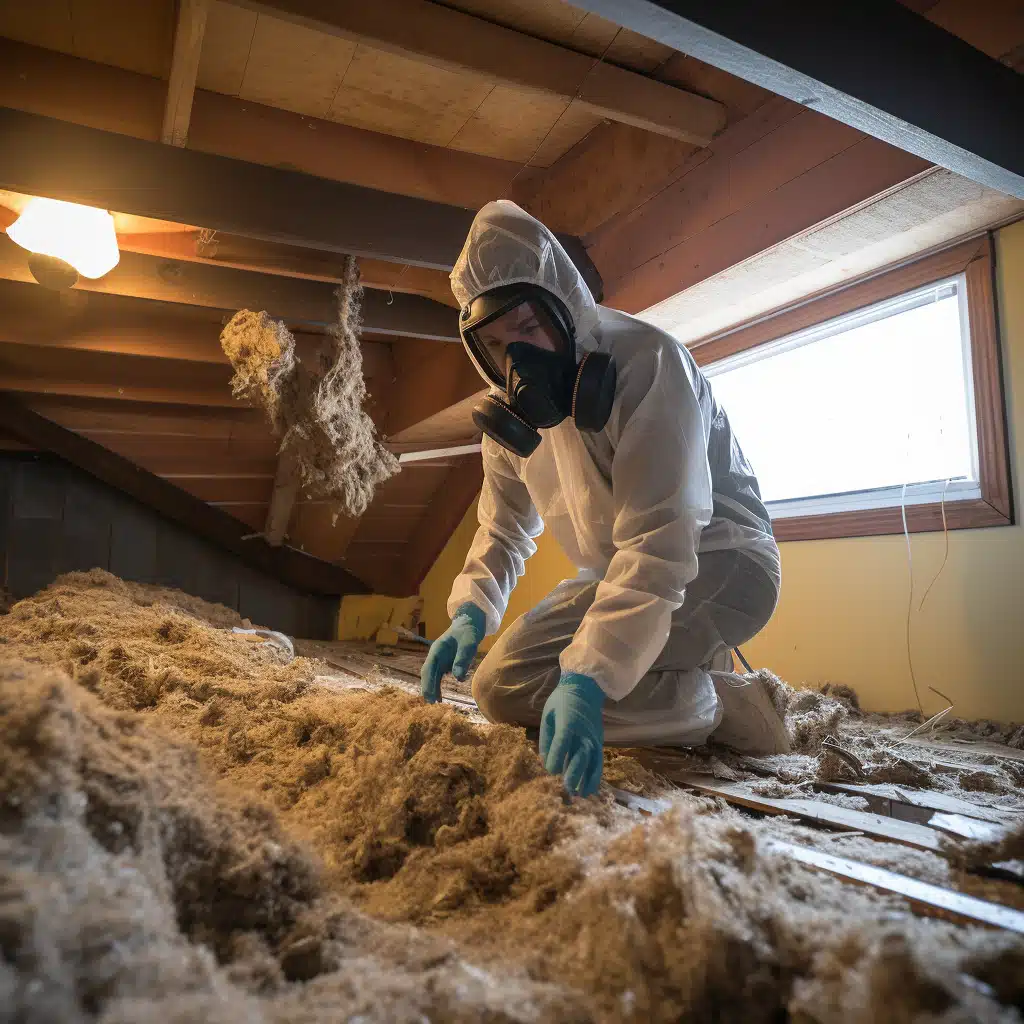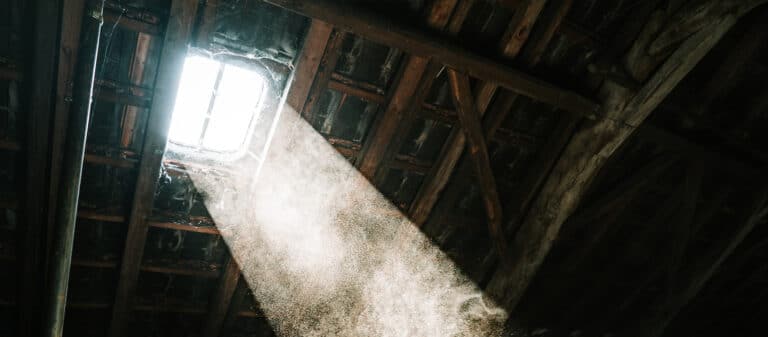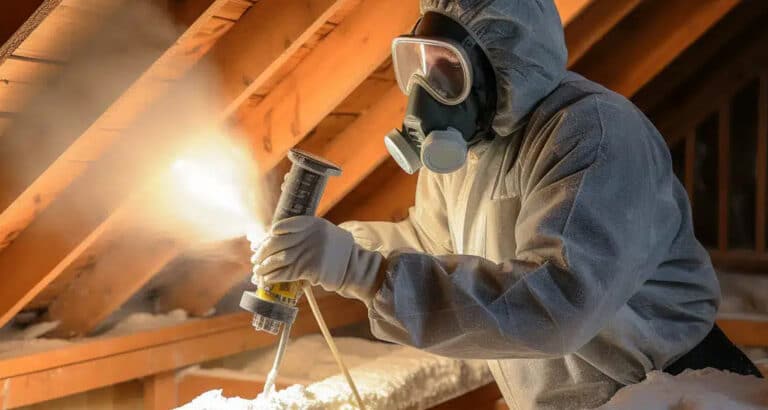The often-neglected attic, tucked away above our living spaces, plays a crucial role in the overall health and energy efficiency of a home.
Attic insulation, while vital for temperature regulation, can deteriorate over time, posing risks to both your health and the integrity of your home.
In this comprehensive guide, we’ll delve into the reasons for removing attic insulation, the associated health risks, the benefits of removal, and crucial tips for deciding when and how to undertake this task.
Reasons to Remove Attic Insulation
Mold and Dust
One of the primary reasons to consider removing attic insulation is the presence of mold and dust. Over time, moisture infiltration can lead to mold growth, turning your attic into an unhealthy environment. Dust accumulation, often unseen, can exacerbate respiratory issues and impact indoor air quality.
Fire Damage
Attic spaces are susceptible to fire hazards, and if a fire occurs, the insulation may become compromised. Damaged insulation poses a significant risk, as it can release harmful particles into the air. In such cases, removal becomes essential for safety and prevention.
Water Damage
Water damage is another critical factor necessitating insulation removal. Leaks from the roof or plumbing issues can saturate insulation, rendering it ineffective and promoting the growth of mold. Timely removal is crucial to prevent further damage to your home’s structure.
Rat Infestation
A less-discussed but equally pressing issue is the presence of rodents in the attic. Rats and mice can nest in insulation, leading to contamination and compromising its efficiency. Removal is not only about cleanliness but also ensuring a pest-free environment.
Outdated Insulation
As insulation technology advances, older insulation materials may become outdated and less effective. Removing outdated insulation allows for the installation of newer, more energy-efficient materials, enhancing your home’s overall insulation performance.
Health Risks of Damage or Dirty Insulation
The condition of attic insulation directly impacts indoor air quality and, subsequently, your health. Mold spores released from contaminated insulation can trigger respiratory issues, allergies, and other health problems. Dust and debris in the insulation pose a similar risk, aggravating pre-existing conditions and causing discomfort for occupants.
Benefits of Removing Old Attic Insulation
Improved Indoor Air Quality
Removing damaged or dirty insulation significantly improves indoor air quality. By eliminating mold, dust, and contaminants, you create a healthier living environment for you and your family.
Enhanced Energy Efficiency
Outdated or damaged insulation hampers energy efficiency. Removing it allows for the installation of modern, energy-efficient materials, reducing your heating and cooling costs and making your home more environmentally friendly.
Prevention of Structural Damage
Water-damaged insulation can lead to structural issues in your home. Timely removal prevents further damage, ensuring the longevity of your property and avoiding costly repairs down the line.
Pest Control
Rat-infested insulation not only poses health risks but can also lead to ongoing pest issues. Removal and proper sealing of entry points help in pest control and maintaining a hygienic and comfortable living space.
Increased Home Value
Upgrading insulation adds value to your home. Prospective buyers appreciate a well-maintained and energy-efficient property, making it a sound investment in the long run.
When Should I Remove My Old Attic Insulation?
Visible Damage
If you notice visible signs of damage, such as mold, water stains, or compromised material, it’s time to consider removal. Ignoring these issues can lead to further damage and health risks.
Age of Insulation
The age of your insulation is a crucial factor. If it’s nearing the end of its expected lifespan or is made from outdated materials, removal is advisable to enhance energy efficiency.
Pest Infestation
Evidence of pests in your attic, such as droppings or nests, should prompt immediate action. Removal and proper pest control measures are essential to prevent further damage.
Renovation or Remodeling
If you’re planning renovations or remodeling projects that involve the attic, it’s an opportune time to assess and potentially replace the insulation for improved efficiency.
Increase in Allergies or Respiratory Issues
A sudden increase in allergies or respiratory problems among occupants may be a sign of contaminated insulation. In such cases, removal becomes a priority for the health and well-being of the residents.
DIY Attic Insulation Removal vs. Professional Removal
DIY Removal Benefits
- Cost-Effective: DIY removal can save money, especially for smaller attic spaces.
- Personal Control: You have control over the pace and process.
- Simple Cases: For minimal damage or contamination, DIY may suffice.
Professional Removal
- Expertise: Professionals have the knowledge to identify and address various issues effectively.
- Safety: Removal can involve hazards; professionals are equipped to handle them safely.
- Efficiency: Professionals work efficiently, minimizing disruption and completing the task promptly.
- Comprehensive Solutions: Experts can assess the entire attic system, addressing underlying issues for a holistic solution.
Removing attic insulation is a nuanced task that requires careful consideration.
From health risks and benefits to the decision between DIY and professional removal, understanding the process ensures you make informed choices for the well-being of your home and those who inhabit it. If in doubt, consulting with insulation professionals at EnergySmart can provide personalized insights tailored to your specific situation.
Contact EnergySmart today for a free, no-obligation quote.
FAQs: Attic Insulation Removal
1. Can I leave old insulation if it’s not visibly damaged?
While it may seem harmless, old insulation can harbor unseen issues like dust and allergens. It’s advisable to assess its condition and consider removal if it’s outdated or near the end of its lifespan.
2. Is attic insulation removal a DIY-friendly task?
While some may opt for DIY removal for small spaces, larger or more complex jobs are best handled by professionals. Safety, efficiency, and proper disposal are crucial aspects that professionals can manage effectively.
3. How often should attic insulation be replaced?
The lifespan of insulation varies, but it’s generally recommended to assess it every 15-20 years. If you notice signs of damage or contamination before that, removal and replacement may be necessary.
4. Can I install new insulation over old insulation?
In some cases, yes. However, it’s crucial to assess the condition of the existing insulation. If it’s damaged or contaminated, removal is recommended to ensure the effectiveness of the new insulation.
5. What safety precautions should I take during DIY removal?
If opting for DIY removal, wear protective gear, use a respirator, and follow safety guidelines. Take precautions to avoid direct contact with contaminants, and ensure proper disposal of removed insulation.










